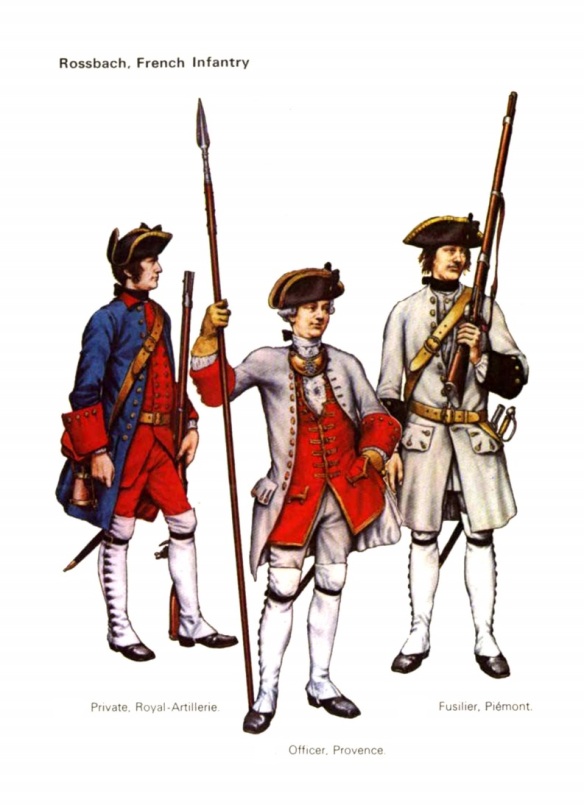It was in France, humiliated by the armies of Prussia and Britain at Rossbach (1757) and Minden (1759) respectively, that there was the most experimentation in theory and practice and a willingness to challenge the operation, organization, equipment and ethos of the army. In his Essai general de tactique (Paris, 1772), Hippolyte de Guibert stressed movement and enveloping manoeuvres, advocated living off the land in order to increase the speed of operations, criticized reliance on fortifications and urged the value of a patriotic citizen army. The concept of the division, a standing unit maintained in peace and war, and including elements of all arms and, therefore, able to operate independently, was developed in France. Such a unit could serve effectively, both as a detached force and as part of a co-ordinated army operating in accordance with a strategic plan. The divisional plan evolved from 1759, and in 1787-8 army administration was arranged along divisional lines.
There was also interest in France in different fighting methods, developing earlier ideas by writers such as Marshal Saxe, whose Mes reveries criticized reliance on fire-power alone, advocating instead a combination of fire-power and shock: ‘the insignificancy of small-arms began to be discovered, which makes more noise than they do execution … I shall appeal to the experience of all mankind, if any single discharge was ever so violent as to disable an enemy from advancing afterwards, to take ample revenge, by pouring in his fire, and at the same instant rushing in with fixed bayonets; it is by this method only, that numbers are to be destroyed, and victories obtained.’ Saxe was unhappy with ‘the present method of fixing by word of command, as it detains the soldier in a constrained position, prevents his levelling with any exactness’. He preferred individually aimed fire and shock action. Charging with a bayonet was not uncommon in the eighteenth century, but actual hand-to-hand combat with bayonets was rarer. The mere threat by resolute troops was often enough to cause the less resolute to turn and run. Individually aimed fire was more accurate with rifles than muskets. In the latter case, a volley might have greater psychological impact if at close range and followed by a charge.
Marshal Saxe was important because he encouraged fresh thoughts about tactics and strategy: He was not alone in this: two other French writers, Jean-Charles Folard and François-Jean de Mesnil-Durand, stressed the shock and weight of force attacking in columns rather than the customary deployment of fire-power and linear tactics. Manoeuvres in 1778 designed to test the rival systems failed to settle the controversy, but the new tactical manual issued in 1791 incorporated both.
The French army was also given better weaponry, in what was increasingly a more important arm of battle, the artillery: Jean-Baptiste Gribeauval (1715-89), who had served during the Seven Years War with the Austrian army, then the best in Europe, standardized the French artillery from 1769, and was appointed inspector-general of artillery in 1776. He used standardized specifications: 4-, 8- and 12-pounder cannon and 6-inch howitzers in eight-gun batteries. Mobility was increased by stronger, larger wheels, shorter barrels and lighter weight cannon, more secure mobile gun carriages and better casting methods. Accuracy was improved by better sights, the issue of gunnery tables and the introduction of inclination markers. The rate of fire rose thanks to the introduction of pre-packaged rounds. Horses were harnessed in pairs instead of in tandem. The theory of war advanced to take note of these changes. In his De f’usage de f’artillerie nouvelle dans fa guerre de campagne (Paris, 1778), the Chevalier Jean du Teil argued that the artillery should begin battles and should be massed for effect.
